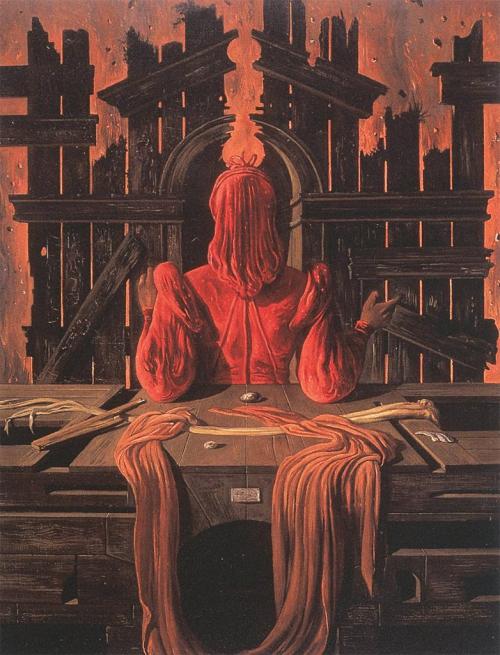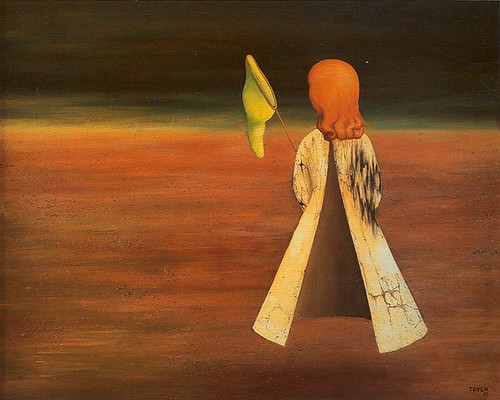When starting out, I initially want to find paintings that say something to me. I may not understand what it is they convey exactly, but I must first have an aesthetic attraction to them and, ultimately, an emotional and visceral reaction. Since painting is a decidedly visual art, this seemed the most appropriate path in the selection process.
Once I had chosen some 20 or 30 different paintings (the list currently sits at 63 total), I began looking at each piece in a different manner; research had to happen. I needed to find out everything I could about not only the painting, but the artist's as well. What influenced the artist? What kind of philosophies did they hold, both for art and for living? Was there something that occurred in their life that became a part of their overall visual patois, a mainstay metaphor maybe? I needed to find as many connections between the art, the artist, and the story I hoped to write in order to put the chosen paintings to proper good use.
That many of the pieces come from the Surrealist camp is perhaps more a glimpse at my particular interests rather than any derived intended meaning for the book. I find most surrealist art to be among the most beautiful, the most mind-bending, and the most thought-provoking...all traits I wanted my book to contain as well. The style seemed fitting.
Once I narrowed down my field of 20 to about half of that, it was time to dig in to the work. The first piece chosen had always been Magritte's "Son of Man." It just seemed right for him to have a voice in the piece and I couldn't explain any further than that; it was just a feeling. Oftentimes, I forced myself to simply stare at the work for a significant amount of time in order to figure out how exactly I wanted the voice of the painting to emerge. Like I said in my Thesis Preface, this is a bit of a highwire act. Not only am I using someone else's art to help tell my story, but there is the very real possibility that I may unintentionally cheapen the intention of the piece.
Textually, I struggled. I wanted each piece to have its own distinctive style and cadence. De Chirico's "Two Sisters" became a back and forth poem between the two figures trapped between the frames. Duchamp's "Nude Descending a Staircase" became a kind of journal or diary detailing the fractured nature of the father/"son" relationship. Hopper's "Automat" became a lonely woman's need for someone to listen to her talk about what was missing from her life. All of these personal problems became tied into the greater story, yet remained very distinctly the voice of the painting.
And now, I am going through that same process for another 30+ paintings. I need to have at least some semblance of an idea as to how to approach them all because I realized that if this book ever gets published, being allowed to use all these images is going to either be costly or not allowed by the people or foundations who retain the rights to them. And that's understandable, if a little disappointing to think about. Until that day comes, I keep moving forward.
Below, you'll find the new batch of pieces I'm working from. At the moment, I have about as much idea as you do as to how I'm going to shape their voices and their stories. The first one, Thomas Hart Benton's "Persephone," will most likely be the easiest due to the overt mythological reference of Persephone's abduction by Hades.
Thomas Hart Benton - "Persephone"
Eugene Berman - "Cassandra"
Toyen - "Sleep"
Felix Labisse - "Phyme"
Joaquin Torres-Garcia - "Two Figures"

Hugo Simberg - "Garden of Death"
Francis Picabia - "Five Women"
Paul Gauguin - "Manao Tupapau (The Spirit of the Dead Keep Watch)"
Kay Sage - "Small Portrait"
Paul Cezanne - "Pyramid of Skulls"
(1,600)










No comments:
Post a Comment